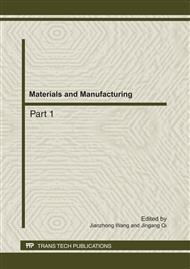p.345
p.350
p.355
p.359
p.364
p.368
p.372
p.376
p.380
Experimental Investigation of Formability Enhancement Using Hydraulic Counter Pressure Assisted Warm Deep Drawing
Abstract:
Deep drawing processes are widely utilized in mechanical industries for producing several typologies of products ranging from computer industry to automotive components, from house products to furniture products. The goal of this study is to verify experimentally the warm deep drawing process assisted with hydraulic counter pressure as a suitable alternative to conventional deep drawing as a means for producing defect-free sheet metal parts. Using specific process parameters like blank holding pressure, blank diameter and temperature, wrinkle-free parts with deeper draws could be produced. An enhancement in LDR from 2.06 in conventional deep drawing to 2.16 in warm deep drawing with a lower blank holding pressure is achieved. The lower blank holding pressure leads to lesser thickness variation in the product this reducing the occurrence of fracture at the punch radius. The hydraulic counter pressure helps in reduction of wrinkles and enhancement of formability. The improvement in the LDR was observed around 200°C for warm deep drawing. This process reduces the forming restrictions of many materials, can produce complicated shapes and reduces the costs of material and die.
Info:
Periodical:
Pages:
364-367
Citation:
Online since:
July 2011
Keywords:
Price:
Сopyright:
© 2011 Trans Tech Publications Ltd. All Rights Reserved
Share:
Citation:


